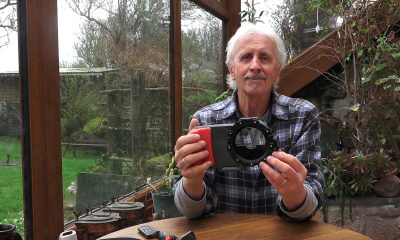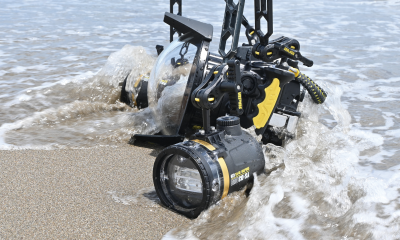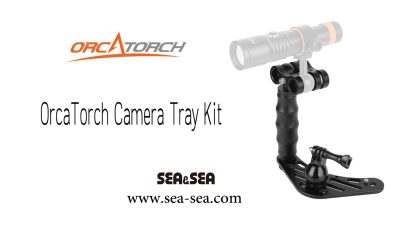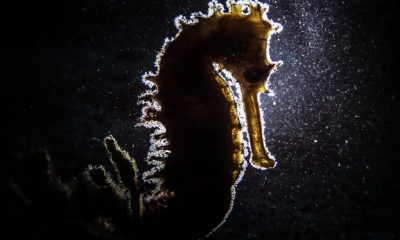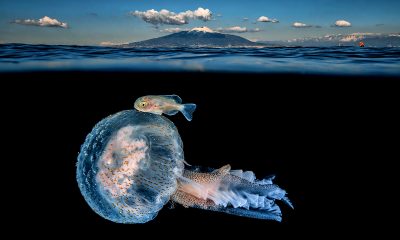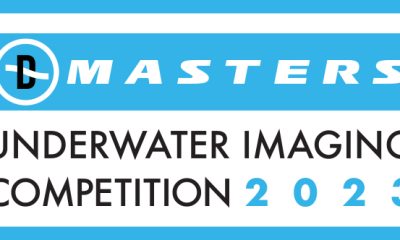News
Subal Announces Housing for Nikon D750
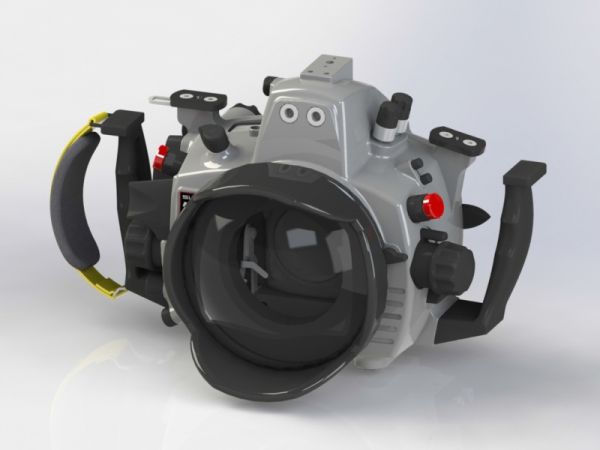
SUBAL has unveiled a new underwater housing for the recently released Nikon D750 DSLR camera.
Here is the official press release:
SUBAL announces the release of the SUBAL ND750 professional underwater housing for Nikon D750 DSLR camera.
Austrian-based world-renowned professional underwater housing manufacturer SUBAL is proud to present the ND750 housing. The meticulously crafted ND750 expands the possibilities for professional photographers who demand the best possible performance and reliability in the most challenging environments. With its already known design, quality construction and ergonomic handling, the new ND750 adds another SLR housing to the SUBAL line.
Designed for the world’s most demanding photographers and multimedia professionals, especially those in the fields of underwater sports and nature photography as well as advanced amateur photographers.
A formidable evolution of the new D750 FX format D –SLR provides important upgrades in performance. The D750 features a new 24.3-megapixel, full-frame FX-format sensor without OLPF, designed to achieve exceptional resolution. The D750 uses the EXPEED 4 engine, promising improved image quality and metering and faster burst shooting. Because of the high ISO performance and the autofocus capability in low-light situations, hand-held shooting is made possible even in the dark. The compact, lightweight and slim body with a deep grip widens the field of usage. The tilting LCD monitor further expands the freedom of shooting angle to liberate photographers from previous limitations while giving them more freedom of photographic expression.
With SUBAL’s more than 40 years of expertise in housing design and manufacture, high-quality craftsmanship and ergonomic design are integral features of the new ND750. The handling and feel of SUBAL housings are unmistakable, matched only by their peerless reliability and dependability.
The ND750 housing will be available in January 2015 at an MSRP of USD 3,800 (port not included).
European Craftsmanship
SUBAL incorporates decades of experience and technology, pushing the boundaries further in the underwater housing industry. The ND750 is designed for professional photographers who demand only the most robust and reliable equipment that performs faultlessly under the toughest conditions.
SUBAL understands that fractions of a second can make the difference when capturing the decisive moment, so excellent ergonomics and handling are paramount in every SUBAL housing. Combining exceptional innovation and design in the ND750, SUBAL have created the most ergonomic housing on the market for the Nikon D750 SLR camera.
Features and Control with Handling in Mind
Ease of operation and superior construction are fundamental components of SUBAL’s tradition and engineering DNA. SUBAL provides innovative solutions that achieve maximum user-friendliness and comfort while allowing easy servicing. As with every SUBAL housing, all the camera’s functions can be operated from the ND750: Power On-Off/Display Illumination, Shutter Release, Zoom (Manual Focus), Front and Rear Main Dial controls, Lens Release, Port lock system, Focus Mode Selector (M-S-C), Metering Mode Control, Movie Record Button, Mode Selector, AF- Lock, AF-On, Port Lock. The ND750 includes buttons for the following: Mode, Exposure Compensation, Bracketing, Flash Sync Mode, Lock, Metering Mode Control, Rec. Start/Stop, Playback, Delete, Menu, Thumbnail, Protect, OK, ISO, Quality, White Balance, Microphone, Multi Selector, Info, Live View, and AF Mode.
Designed with superb handling in mind, the ND750 provides photographers with access to all photo and video functions while holding the camera.
Technical Specifications
The SUBAL ND750 housing is crafted from a solid block of high-grade seawater-resistant aluminum, which is anodized and put through a chemical hardening process. SUBAL is the only underwater housing manufacturer to use this patented, hard-coat anodizing method. A triple-layer powder coating is added, giving the housing an elegant finish and further protecting it from the environment. All shafts and screws are made of high-alloy chrome-nickel steel to extend operational lifetime. The advanced manufacturing process and use of high-grade materials ensure that your investment will last a lifetime. Like all SUBAL housings, the ND750 is equipped with the SUBAL Quick Lock closure system for maximum safety.
Controls
- Designed for professional underwater use
- Access to all camera and video functions
- Two fiber-optic connectors and two bulkheads with optional Nikonos 5N, Ikelite and S6 connectors
Optional accessories for the ND750
- Extensive line of high-quality SUBAL dome and flat ports
- Gears for all major underwater lenses
- Easy attachment of viewfinders: GS180°, WS45° and PS30° Prism Viewfinder
- Full line of mounting accessories available: arms systems, strobes, adapters, mount balls
SUBAL Professional Standard Features
The SUBAL ND750 integrates years of accumulated experience with significant engineering breakthroughs.
- The SUBAL Quick Lock System is a precise and robust locking system that eliminates accidental opening and has proven to be the most reliable on the market.
- The new Port Lock System secures the extension ring (EXR) to the bayonet housing and provides the means to secure these components with ease.
- The lens Release Latch allows for easy lens exchange without removing the camera from the housing.
- A visual and audible warning Leak Alarm comes as standard on every SUBAL housing.
- The SUBAL Special Saddle System for quick and precise positioning of the camera body inside the housing makes misalignment impossible.
Optional Viewfinder Options
In addition to the standard viewfinder, SUBAL has developed various options to meet the demands of underwater photographers. The viewfinder is one of the most important elements for improving creativity in underwater imaging. All SUBAL viewfinders are manufactured from sea-grade aluminum with an anodized casing. High-quality, multi-coated optical glass ensures the highest resolution and optimum light transmission. A simple interchangeable system makes it possible for the user to fit, remove or change any of the SUBAL’s viewfinders whenever needed. The SUBAL GS180 straight viewfinder provides 150% magnification of the camera image. The eyepiece of the new WS45 viewfinder is at a comfortable 45° angle to the camera’s viewfinder. With a magnification factor of 150%, the visible image is 2.5 times larger than the standard viewfinder. The WS45 also rotates 360° with click stops every 90° to suit different viewing angles and image orientation. This is especially helpful for macro shooting or for subjects on the seabed as well as those tricky under/over, half-and-half shots. SUBAL’s latest innovation is the new PS30 prism viewfinder. The viewfinder is specially designed for video recording and facilitates shooting on the seabed and under/over, half-and-half shots.

SUBAL Professional 30° Prism Viewfinder
Strobe Options
SUBAL provides two fiber-optic ports for accurate TTL control of strobes such as the Inon Z-240, Sea & Sea YS-D1 and Sea & Sea YS-01. Optional connectors are available on request for Nikonos V, Ikelite and S6 as well as a video connector for an external monitor.
Technical Information
| Area | Description |
| Housing Construction | Machined from a single block of specially treated, high grade corrosion-resistant aluminum alloy. Hardness treatment and three-layer powder paint coating applied. |
| Design | Ergonomic placement of all the important controls provides convenient and comfortable handling of all camera functions. |
| TTL/Strobes Options/Flash Monitor | Dual Sea & Sea Fiber-Optic ports and optional 2pc 5pin, 6pin connectors or Ikelite connectors kit. Video output available on request for external monitor or external trigger. |
| Port Mount Type | Bayonet 4 and 3 size available. All SUBAL dome and flat port options can be mounted except for size two ports. Port Lock Option |
| Dome Ports | DP 100/4 (4”), SWB (6”) , DP FE (8”) and DP 230. |
| Viewfinder Options | Standard viewfinder. Optional GS180, WS45 Viewfinder and 30° Prism |
| Leak Alarm | Standard built in housing. |
| Display | Yes |
| Dimensions | (W x H x D) 220 X 202 X 124 mm (w/o port and handles) |
| Buoyancy | Housing aprox 500 gr. Negative. |
| Depth Range | 80 meters (standard version) and 120 meters (TEC version on request). |
| Color Options | SUBAL standard color. |
| Weight | 2,49 kg incl. handles (no ports or accessories included) |
| Controls | Power On-Off, Display Illumination, Shutter Release, Zoom (Manual Focus), Front and Rear Main Dial, Lens Release, Focus Mode Selector (M-S-C), Metering Mode Control, Movie Record Button, Play Back, Mode Selector, AF-Lock, AF-On, Port Lock Option, Flash open/close. Push Buttons for: Mode, Exp. Compensation, Bracketing, Flash Sync Mode, Lock, Metering Mode Control, Record, Start/Stop, Playback, Delete, Menu, Thumbnail, Protect, OK, ISO, Quality, White Balance, Microphone, Multi Selector, Info, Live View, and AF Mode, Port Lock. |
Lens Options
SUBAL constantly evaluates new lenses as they arrive on the market and suggests the best options for underwater use. A SUBAL lens port chart for Nikon is available and will guide you through the optimal combination of ports and extension rings for each lens model. Contact your nearest SUBAL dealer for further assistance.
Blogs
Northern Red Sea Reefs and Wrecks Trip Report, Part 3: The Mighty Thistlegorm

Jake Davies boards Ghazala Explorer for an unforgettable Red Sea diving experience…
Overnight, the wind picked up, making the planned morning dive a bit bumpy on the Zodiacs to the drop point on Thomas Reef. There, we would dive along the reef before descending through the canyon and then passing under the arch before ascending the wall with a gentle drift. The site provided great encounters with more pelagic species, including shoals of large barracuda, tuna, and bigeye trevally.
Once back on the boat, it was time to get everything tied down again as we would head back south. This time, with the wind behind us, heading to Ras Mohammed to dive Jackfish Alley for another great gentle drift wall dive before then heading up the coast towards the Gulf of Suez to moor up at the wreck of the Thistlegorm. This being the highlight wreck dive of the trip and for many onboard, including myself, it was the first time diving this iconic wreck. I had heard so much about the wreck from friends, and globally, this is a must on any diver’s list. Fortunately for us, there was only one other boat at the site, which was a rarity. A great briefing was delivered by Ahmed, who provided a detailed background about the wreck’s history along with all the required safety information as the currents and visibility at the site can be variable.

Kitting up, there was a lot of excitement on deck before entering the water and heading down the shoreline. Descending to the wreck, there was a light northerly current which reduced the visibility, making it feel more like the conditions that can be found off the Welsh coast. At 10m from the bottom, the outline of the wreck appeared as we reached the area of the wreck which had been bombed, as our mooring line was attached to part of the propeller shaft. Arriving on deck, instantly everywhere you looked there were many of the supplies which the ship was carrying, including Bren Carrier tanks and projectiles that instantly stood out.

We headed around the exterior, taking a look at the large propeller and guns mounted on deck before entering the wreck on the port side to take a look in the holds. It was incredible to see all the trucks, Norton 16H, and BSA motorcycles still perfectly stacked within, providing a real snapshot in time.

Overall, we had four dives on the Thistlegorm, where for all of the dives we were the only group in the water, and at times, there were just three of us on the whole wreck, which made it even more special, especially knowing that most days the wreck has hundreds of divers. Along with the history of the wreck, there was plenty of marine life on the wreck and around, from big green turtles to batfish, along with shoals of mackerel being hunted by trevally. Some unforgettable dives.

The final leg of the trip saw us cross back over the Suez Canal to the Gobal Islands where we planned to stay the night and do three dives at the Dolphin House for the potential of sharing the dive with dolphins. The site, which included a channel that was teeming with reef fish, especially large numbers of goatfish that swam in large shoals along the edge of the reef. These were nice relaxing dives to end the week. Unfortunately, the dolphins didn’t show up, which was okay as like all marine life they are difficult to predict and you can’t guarantee what’s going to be seen. With the last dive complete, we headed back to port for the final night where it was time to clean all the kit and pack before the departure flight the next day.

The whole week from start to finish on Ghazala Explorer was amazing; the boat had all the facilities you need for a comfortable week aboard. The crew were always there to help throughout the day and the chefs providing top quality food which was required after every dive. The itinerary providing some of the best diving with a nice mixture of wreck and reef dives. I would recommend the trip to anyone, whether it’s your first Red Sea liveaboard in the Red Sea or you’re revisiting. Hopefully, it’s not too long before I head back to explore more of the Red Sea onboard Ghazala Explorer.

To find out more about the Northern Red Sea reef and wrecks itineraries aboard Ghazala Explorer, or to book, contact Scuba Travel now:
Email: dive@scubatravel.com
Tel: +44 (0)1483 411590
Photos: Jake Davies / Avalon.Red
Blogs
Northern Red Sea Reefs and Wrecks Trip Report, Part 2: Wall to Wall Wrecks

Jake Davies boards Ghazala Explorer for an unforgettable Red Sea diving experience…
The second day’s diving was a day full of wreck diving at Abu Nuhas, which included the Chrisoula K, Carnatic, and Ghiannis D. The first dive of the day was onto the Chrisoula K, also known as the wreck of tiles. The 98m vessel remains largely intact where she was loaded with tiles which can be seen throughout the hold. The stern sits at 26m and the bow just below the surface. One of the highlights of the wreck is heading inside and seeing the workroom where the machinery used for cutting the tiles are perfectly intact. The bow provided some relaxing scenery as the bright sunlight highlighted the colours of the soft coral reef and the many reef fish.

Following breakfast, we then headed to the next wreck, which was the Carnatic. The Carnatic is an 89.9m sail steamer vessel that was built in Britain back in 1862. She ran aground on the reef back in 1869 and remains at 27m. At the time, she was carrying a range of items, including 40,000 sterling in gold. An impressive wreck where much of the superstructure remains, and the two large masts lay on the seafloor. The wooden ribs of the hull provide structures for lots of soft corals, and into the stern section, the light beams through, bouncing off the large shoals of glass fish that can be found using the structure as shelter from the larger predators that are found outside of the wreck.

The final wreck at Abu Nuhas was the Ghiannis D, originally called ‘Shoyo Maru,’ which was 99.5m long and built in Japan back in 1969 before becoming a Greek-registered cargo ship in 1980. The ship then ran aground on the reef on April 19th, 1983, and now sits at the bottom at a depth of 27m. Heading down the line, the stern of the ship remains in good condition compared to the rest of the hull. The highlight of the wreck, though, is heading into the stern section and down the flights of stairs to enter the engine room, which remains in good condition and is definitely worth exploring. After exploring the interior section of the ship, we then headed over to see the rest of the superstructure, where it’s particularly interesting to see the large table corals that have grown at the bow relatively quickly considering the date the ship sank. After surfacing and enjoying some afternoon snacks, we made sure everything was strapped down and secured as we would be heading north and crossing the Gulf of Suez, where the winds were still creating plenty of chop.

The next morning, it was a short hop to Ras Mohammed Nature Reserve for the next couple of days of diving. The 6am wake-up call came along with the briefing for the first site we would be diving, which was Shark & Yolanda. The low current conditions allowed us to start the dive at Anemone City, where we would drift along the steep, coral-filled wall. These dives involved drifts, as mooring in Ras Mohammed wasn’t allowed to protect the reefs. As a dive site, Shark & Yolanda is well-known and historically had a lot of sharks, but unfortunately not so many in recent years, especially not so early in the season. However, there was always a chance when looking out into the blue.

The gentle drift took us along the steep walls of the site, with plenty of anemone fish to be seen and a huge variety of corals. It wasn’t long into the dive before we were accompanied by a hawksbill turtle, who drifted with us between the two atolls before parting ways. Between the two reefs, the shallow patch with parts of coral heads surrounded by sand provided the chance to see a few blue-spotted stingrays that were mainly resting underneath the corals and are always a pleasure to see. With this being the morning dive, the early sunlight lit up the walls, providing tranquil moments. Looking out into the blue, there was very little to be seen, but a small shoal of batfish shimmering underneath the sunlight was a moment to capture as we watched them swim by as they watched us.

Towards the end of the dive, we stopped at the wreck of the Jolanda where the seafloor was scattered with toilets from the containers it was carrying. This provided a unique site to make a safety stop, which was also accompanied by a large barracuda slowly swimming by, along with a hawksbill turtle calmly swimming over the reef as the sun rays danced in the distance.
For the next dive, we headed north to the Strait of Tiran to explore the reefs situated between Tiran Island and Sharm El Sheik, which were named after the British divers who had found them. We started on Jackson before heading to Gordons Reef, where we also did the night dive. All the atolls at these sites provided stunning, bustling coral reefs close to the surface and steep walls to swim along, which always provided the opportunity to keep an eye out for some of the larger species that can be seen in the blue. Midwater around Jackson Reef was filled with red-toothed triggerfish and shoals of banner fish, which at times were so dense that you couldn’t see into the blue. Moments went by peacefully as we enjoyed the slow drift above the reef, watching these shoals swim around under the mid-afternoon sun.

The night dive at Gordon’s Reef was mainly among the stacks of corals surrounded by sand, which was great to explore under the darkness. After some time circling the corals, we came across what we were really hoping to find, and that was an octopus hunting on the reef. We spent the majority of the dive just watching it crawl among the reef, blending into its changing surroundings through changes in colour and skin texture. It’s always so fascinating and captivating to watch these incredibly intelligent animals, in awe of their ability to carry out these physical changes to perfectly blend into the reef. Before we knew it, it was time to head back to the boat to enjoy a well-deserved tasty dinner prepared by the talented chefs onboard.
Check in for the 3rd and final part of this series from Jake tomorrow!
To find out more about the Northern Red Sea reef and wrecks itineraries aboard Ghazala Explorer, or to book, contact Scuba Travel now:
Email: dive@scubatravel.com
Tel: +44 (0)1483 411590
Photos: Jake Davies / Avalon.Red
-

 News3 months ago
News3 months agoHone your underwater photography skills with Alphamarine Photography at Red Sea Diving Safari in March
-

 News3 months ago
News3 months agoCapturing Critters in Lembeh Underwater Photography Workshop 2024: Event Roundup
-

 Marine Life & Conservation Blogs2 months ago
Marine Life & Conservation Blogs2 months agoCreature Feature: Swell Sharks
-

 Blogs2 months ago
Blogs2 months agoMurex Resorts: Passport to Paradise!
-

 Blogs2 months ago
Blogs2 months agoDiver Discovering Whale Skeletons Beneath Ice Judged World’s Best Underwater Photograph
-

 Gear Reviews3 months ago
Gear Reviews3 months agoGear Review: Oceanic+ Dive Housing for iPhone
-

 Marine Life & Conservation2 months ago
Marine Life & Conservation2 months agoSave the Manatee Club launches brand new webcams at Silver Springs State Park, Florida
-

 News3 months ago
News3 months agoWorld’s Best Underwater Photographers Unveil Breathtaking Images at World Shootout 2023



